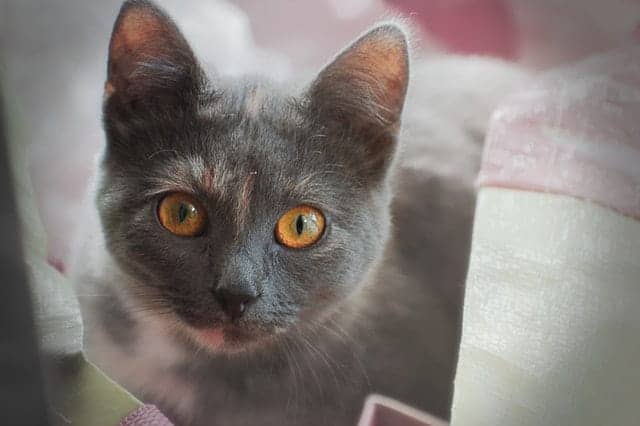
Keratitis is a disease that can affect the cat’s eyes. Let’s find out everything you need to know to protect the health of the cat.
Keratitis is an eye disease that involves inflammation of the cat’s cornea. This disease can affect one or both eyes and is usually not painful for the cat. Let’s see what are the causes, symptoms and treatments to which cat should be subjected.
What is keratitis in cats
Eosinophilic keratitis is a pathology of the cat’s cornea, also called proliferative, due to its very fast course. In most cases, the disease is unilateral. If not treated in time, however, it can become bilateral and pose serious risks to the health of the cat.
In fact, it can cause perforation of the cornea of the animal, causing it to be blind. Keratitis indiscriminately affects cats of all ages and breeds; however, it manifests itself more frequently in persian, Siamese, Russian Blue and Hymalaian.
Causes and symptoms of inflammation of the cornea
What are the causes of keratitis in cats? They have not been identified with certainty, although in most of the cats affected by this pathology the presence of the feline hepers virus has been found.
In addition, the onset of the pathology could be determined by a response of the immune system to a molecule perceived as foreign and potentially dangerous. How to recognize keratitis in cats? The main symptoms of this inflammation are:
- Presence on the cornea of grainy deposits of whitish color and variable thickness
- Conjunctivitis
- Swelling of the conjunctiva caused by an accumulation of fluid.
- Discharge of mucus and pus from the eyes
- Absent pain or minimal discomfort
Keratitis in cats: diagnosis and treatment

Once the presence of one or more symptoms associated with this pathology has been noticed, it will be advisable to promptly subject the cat to a veterinary examination. How is keratitis diagnosed in cats?
The cornea of the animal is scraped. The sample will be examined for the presence of eosinophilic cells. This will serve to exclude pathologies similar to progressive keratitis, including:
- Ectropion in the cat
- Corneal cancer
- Lymphoma of the conjunctiva or uvea
- Chronic corneal ulcer
- Squamous cell carcinoma
How is keratitis treated in cats? In the past, megestrol acetate was given to the animal. Today, however, its use is strongly discouraged because of the many effects it can cause, including:
- Diabetes mellitus
- Pyometra
- Development of breast neoplasms
- Behavioral disorders
- Hair loss
To date, for the treatment of keratitis in the cat resort to the administration of anti-inflammatory drugs. The most common therapy involves the use of cyclosporine and cortisone topically.
Symptoms are relieved progressively, until the total disappearance of the pathology. However, a complete recovery of the animal can take from a minimum of a few days to a maximum of several months.
It is not uncommon, however, that it is impossible to cure keratitis in the cat decisively. In this case, it will be necessary to subject the cat to a therapy for life.






